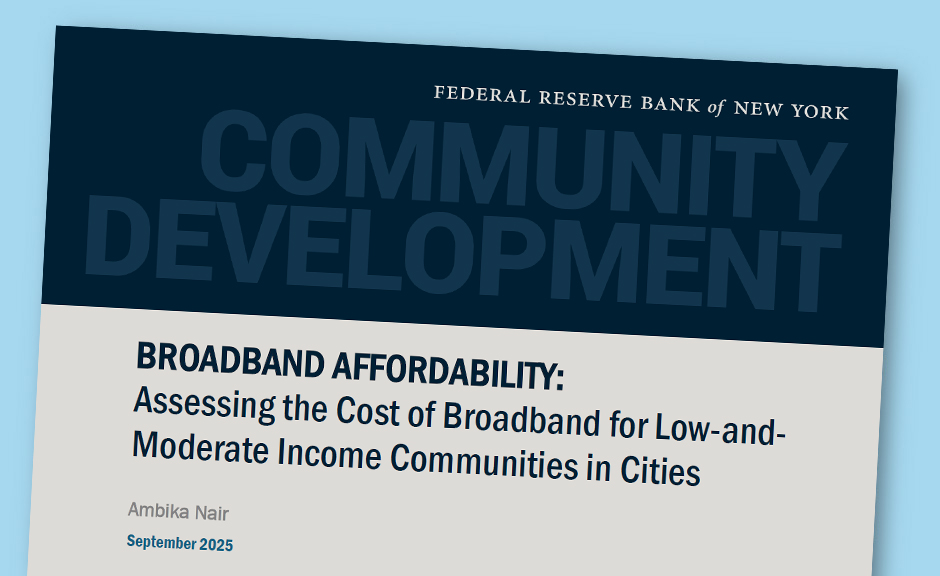
The New York Fed’s Community Development team promotes economic growth and financial stability in the Federal Reserve’s Second District. As part of that work, the team has been studying access to broadband, which can open doors to jobs, financial services, education, and healthcare.
Its September 2025 study, “Broadband Affordability: Assessing the Cost of Broadband for Low-and-Moderate Income Communities in Cities,” introduces a new community-level measure of broadband affordability that considers local median monthly household income and costs of living relative to local costs for broadband.
The study found that low- and moderate-income communities pay a notably higher share of their income for broadband. Such communities pay an average of 2.43% of household income for broadband compared to 0.51% in wealthier areas. In cities where broadband is less affordable, households are more likely to use slower or lower-quality plans, limiting their access to online services.
Data on broadband pricing is scarce in small and rural areas, underscoring the need for localized pricing data to support digital access.
The report follows a 2024 New York Fed study on broadband access in the U.S. Northeast, Puerto Rico, and the U.S. Virgin Islands.










